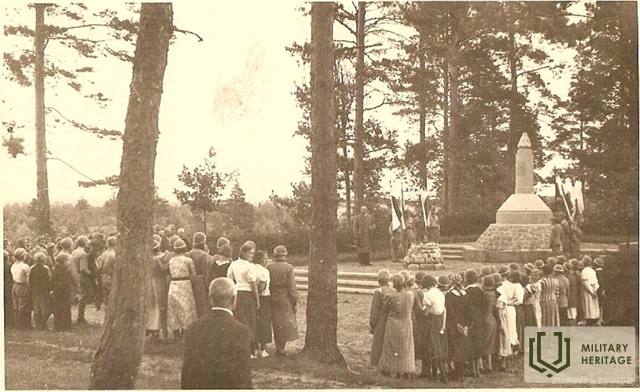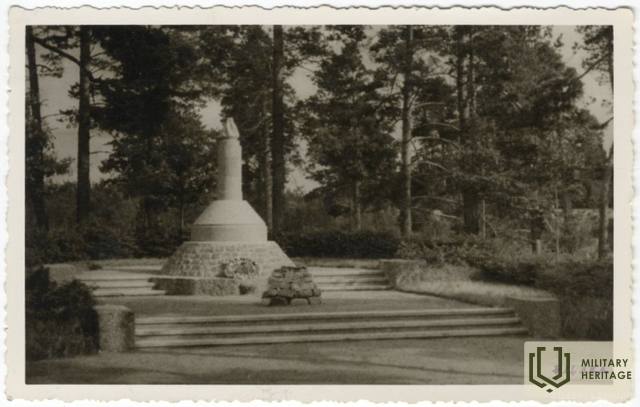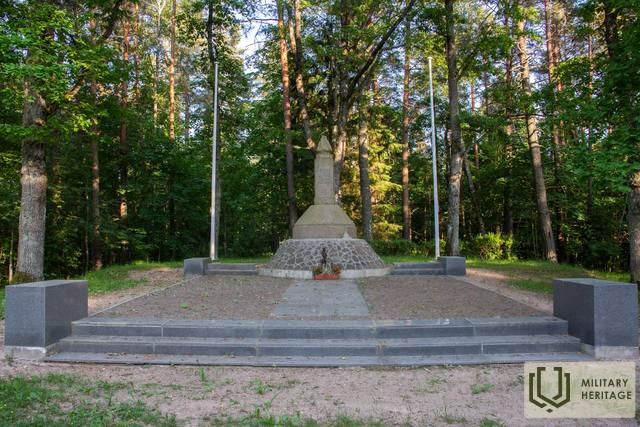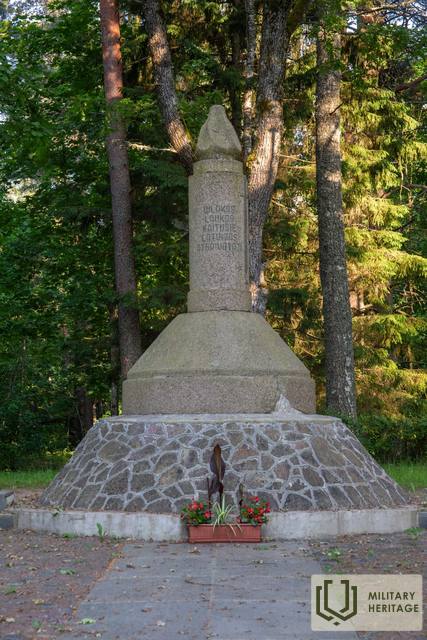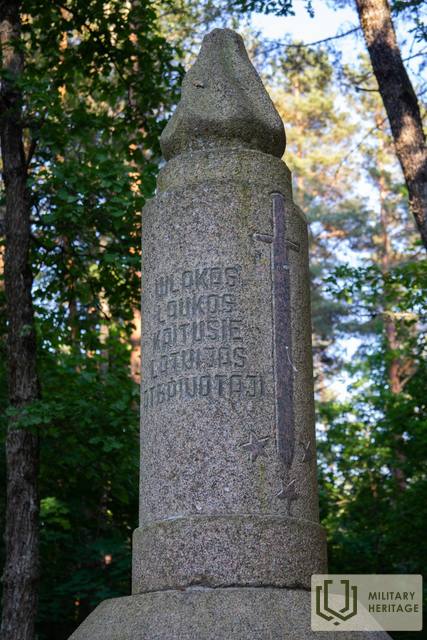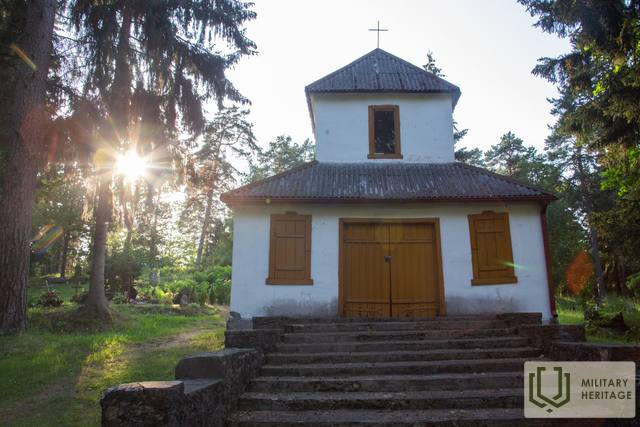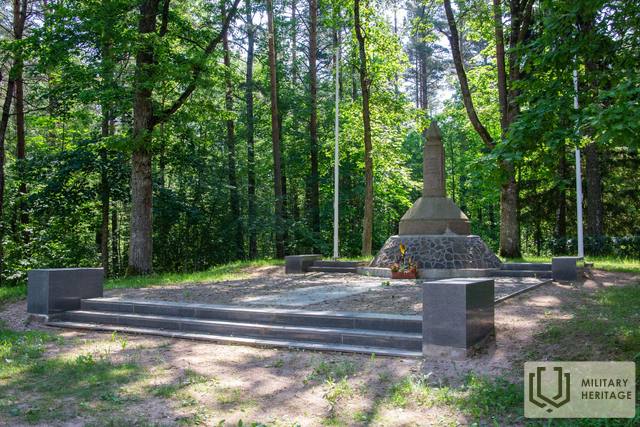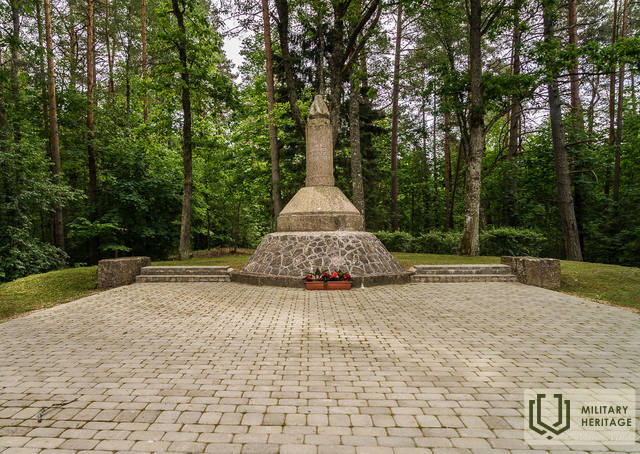A monument to the soldiers who died in the battles for the liberation of Latvia in Jaškov
Memorialinis vieta

 248
248


The road section Viļaka – Vientuļi (P35) is on the left side of the road, near the chapel of the Jaškova grave.
Monument to Latvian and Estonian soldiers who died in the War of Independence.
The monument created by the sculptor Kārlis Zemdega in 1920 in memory of the soldiers who fell in the Freedom Struggle in Jaškov was first unveiled on September 22, 1935 at the graves of the Viļaka brothers established in 1929.
The struggle for freedom against the Red Army in Viļakas district began with the attack of the Latvian army and the Latgale partisan regiment on January 9, 1920. Estonian soldiers also participated in it. Viļak was liberated already on January 9, but the fighting to the east of it continued for several more days. Both before and after the liberation of Vilakas, the fallen soldiers were buried in different places known to local residents. As the state of Latvia stabilized, Viļakas began to think about setting up joint graves of brothers. Already from November 18, 1923, after a solemn service in the Catholic church, held by dean P.Apšinīks, a large procession went to the newly formed burial place of the brothers on the hill, in the so-called Jaškov - in the immediate vicinity of Viļaka. Soon, the foundation of the monument was built, the collection of donations for the monument began. Identifying the graves of the fallen soldiers took time, only on November 3, 1929, the reburial took place in the future graves of the brothers. The 31 Latvian and 14 Estonian soldiers who fell in the vicinity of Viļakas were buried in them. In 1935, the monument was ready and on September 22, it was solemnly consecrated.
In the pre-war years of Latvia's independence, all important national events in Viļaka parish were connected with the brothers' graves and this monument.
The monument was destroyed during the post-war years of Soviet rule, but its granite parts, although damaged, were preserved. The monument was restored on November 11, 1990 - Lāčpleš Day.
Panaudoti šaltiniai ir literatūra:
According to the materials of L. Maksimova
http://balvurcb.lv/kb/index.php?View=entry&EntryID=382
Susijusi laiko juosta
Susijusios temos
Susijusi istorija
Šiaurės Latgalos išvadavimas iš bolševikų
1918 m. gruodžio 1 d. Raudonosios armijos daliniai, paremti Raudonųjų šaulių daliniais, įsiveržė į Latvijos teritoriją. Siekdami apsaugoti savo namus, šeimas, gimtuosius rajonus, pabėgti nuo siaubo, Balvi apylinkių vyrai griebėsi ginklo ir ėjo į miškus, pradėjo kurtis pirmosios „žaliosios“ grupės. 1919 m. pavasarį, kai buvo paskelbta mobilizacija, daugybei Balvų apylinkių vyrų kovoti sovietinėje Latvijos armijoje atrodė nepriimtini ir jie prisijungė prie „žaliųjų“ grupuočių. Susikūrė Balvų, Silakrogo, Rugėjų, Teterių-Dūrupės ir Liepnos grupės. „Žaliųjų“ grupių veikla Balvių apylinkėse suaktyvėjo 1919 metų kovo mėnesį.






